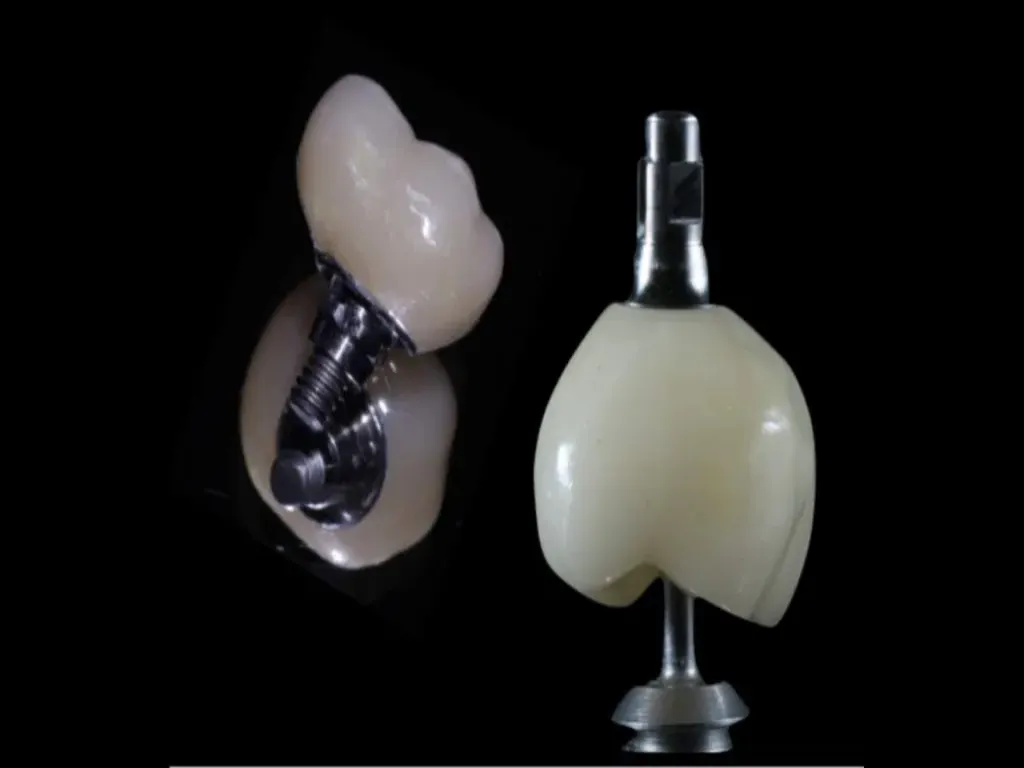Screw-Retained Implants
Screw-Retained Implants are a type of dental restoration in which the prosthesis is directly affixed to the implant with screws, bypassing the need for traditional cement. This method is particularly suitable for full-mouth restorations, single-tooth, or multiple-tooth replacements, offering high strength, easy maintenance, and reduced infection risk.
Details About Screw-Retained Implants
1. Types of Screw-Retained Implants
- Standard Screw-Retained Restoration: Suitable for most implant restoration scenarios, offering stability and ease of maintenance.
- Angled Screw Channel System: Ideal for aesthetic zones, allowing for screw angle adjustments to achieve a pleasing aesthetic result.
2. Design Features & Benefits
The screw-retained implant system allows clinicians to easily remove and reattach the restoration without impacting surrounding gingival or bone tissues. The angled screw channel design ensures excellent aesthetic results in the anterior zone, eliminating the limitations of traditional screw-retained angles. Additionally, screw retention avoids residual cement, reducing periodontal infection risk.
3. Materials & Technology, Manufacturing Process
Screw-retained implants are primarily made of high-strength materials like titanium alloy or zirconia, offering excellent biocompatibility and durability. Using CAD/CAM technology, the screw angles and restoration shapes can be precisely designed, ensuring high adaptability and an efficient installation process.
4. Indicated Patients & Indications
Screw-retained implants are ideal for:
- Patients with full-mouth, single-tooth, or multiple-tooth replacements seeking easy-to-maintain restorations
- Patients with high periodontal health requirements who wish to avoid residual cement
- Patients requiring natural aesthetics in the anterior region
5. Lifespan
With proper installation and care, screw-retained implants typically last 10-15 years or more. Regular maintenance and check-ups help extend their lifespan, with excellent stability in high-bite-force areas.
6. Pros and Cons
| English | Pros | Cons |
| Pros | Easy to remove and maintain; reduces periodontal infection risk; provides natural appearance in aesthetic zones | Complex production process; requires precise angle adjustment |
7. Patient Experience
Screw-retained implants provide patients with a comfortable restoration experience. Their maintainability reduces the frequency of follow-up care, while they excel in both function and aesthetics. Patients often report ease of cleaning and reduced risk of peri-implantitis.
8. Clinical Performance
Screw-retained implants demonstrate excellent stability and durability, especially in high-bite-force posterior areas. Both clinicians and patients are satisfied with its everyday performance and long-term use, making it widely applicable in various restoration scenarios.
9. Certifications & Quality Assurance
Materials for screw-retained implants meet multiple international certification standards, such as FDA and CE, ensuring biocompatibility and safety. Rigorous production processes and quality control procedures guarantee long-lasting stability, providing patients with a reliable choice.
10.Frequently Asked Questions (FAQ)
Q: Are screw-retained implants suitable for all types of restorations?
A: Screw retention is suitable for most types of restorations, but placement location and aesthetic needs should be considered.
Q: Do screw-retained implants require special care?
A: Care is similar to that for natural teeth, but regular check-ups are recommended to ensure long-term stability.


